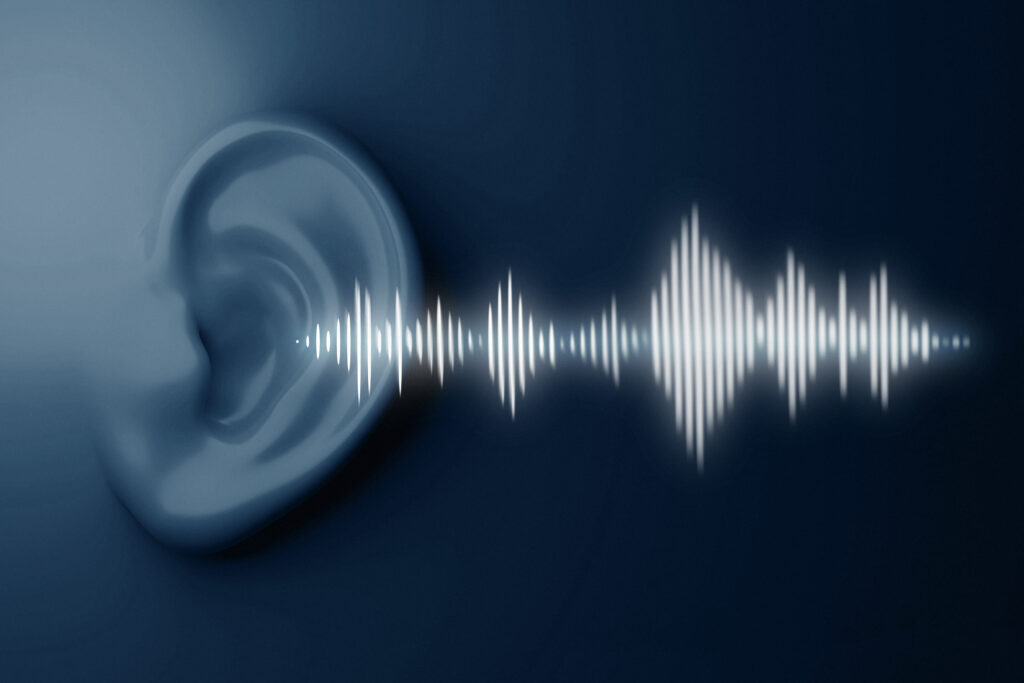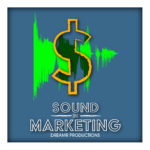What every good business needs to know.
To effectively communicate with a customer, every business must emote. One way to do this is by creating a sound strategy through purposeful sonic branding. Without emotion, there is no relatability and limited sincerity. Why would a customer choose Company A over Company B in the first place? Because Company A created an emotional response that said “choose me”.
Humanity has five senses; sight, sound, touch, taste, and smell. In marketing, sight tends to be the main focus. If as humans we communicate and relate to one another through more than one sense at a time, shouldn’t our brand do the same?
Sound is a powerful sense that has been sorely overlooked and underestimated until now.
Through the art of sonic branding and sound in marketing, brands are able to strengthen their awareness, connection, and conversion with their consumers by making sound on purpose.
Sonic branding
Sonic branding is the strategic and custom built sound within a brand’s identity.

Sonic branding is not decided overnight. Time and care are required in researching and creating the sounds that best represent the brand. It is carefully planned and tested sound design that best supports the brand’s identity.
Think of it from a visual branding perspective.
Would you draw something on a napkin at Denny’s, take it back to your company, and slap it on all your products and branding by the time you’ve digested your food?
“Of course not,” should be your answer.
You would take it back and discuss it with your team, create new versions and alternatives, choose a/b versions to test, soft launch it, and then hard launch the 2.0 version. You would manipulate the original thought into a carefully crafted strategic logo that means something.
Music and sound should be used as an extension of the brand’s identity. They should be strategic and treated with the same care and foresight as the visual branding.
A few brands currently embracing sonic branding are Mastercard, McDonalds, Coca Cola, Netflix, and State Farm. All of these companies have utilized sonic branding in different extremes. They have officially adopted and owned their sound. They are constantly pushing it through a plethora of different audio touch points (discussed below).
Sonic branding is just as available and accessible to the small business as it is to the large. It’s about niching and scaling down to fit the time and resources of said company which I go more into detail about here.
I’m excited to hear what small business does with this blank canvas of possibility.
Sound in marketing
Sound in marketing is all the sound utilized within a brand’s marketing; custom or not.

Sound in marketing is the sound strategy for all the brand’s applicable audio touch points. For example, a brand might choose to use a Taylor Swift song instead of Iron Maiden or classical music rather than top 40. Choosing which VO artist sounds more brand relevant than another are all elements of sound strategy.
Sound in marketing could also be deciding to license one song over another to either match brand or campaign messaging. It could be the choice to only incorporate certain elements of sonic branding, like a sonic logo or functional sound (to be discussed further below) rather than an entire sonic branding package.
Sound in marketing may be a much broader concept than sonic branding, however, both are strategic and brand driven.
Sonic identity
A sonic identity, is the sonic element of a brands’ identity. It is the result of sonic branding and sound strategy put together.

A brand has an identity. That identity should align with the brands’ mission and business objectives. It is what helps grow the business by making the brand relevant and relatable.
A brand’s identity helps the consumer choose to buy from them or not. Their sonic identity reinforces and supports that persona.
Developing and designating a sonic identity is what makes sound strategy work. It is powerful and not to be overlooked.
Sonic branding elements and assets
Audio touch points
Audio touch points are any point in your marketing that sound plays a role.

Audio touch points could include the startup sound for a piece of hardware, ring-tones, app sounds, music playlists, event sounds and music, acoustical designs of your brick and mortar, product launches, smart speaker UX (user experience) design, podcasts for both internal and external use, radio advertising, voice shopping, voice responsive ads, and the list goes on.
This list, while extensive, is short in comparison to what it will be. As technology keeps advancing at a rapid rate, new forms of marketing are popping up every day. Businesses need to be prepared for anything that comes their way. This is why sound strategy and developing a sonic identity is so important.
Functional sounds
Functional sounds are one form of an audio touch point. These are most commonly known as sounds rather than music. However, like sonic branding, they can be a fusion of both.
Functional sounds are the sounds and music deeply rooted in the user experience. They are function based and should provide clarity in accomplishing the task at hand.
Crafting good and effective functional sound is not just seeing the big picture of UX, but hearing it as well.
Some great examples of functional sounds are the swoosh you hear when an email is sent, credit card readers at the grocery store, ATM button sounds during use, ringtones, text message typing tones, the sound of popping on a bubble shooter phone game, the acceleration of an electric vehicle, and all the sounds in a casino slot machine.
Sonic logos and jingles
Although jingles are still the most popular descriptor of sonic branding, they are not to be confused with a sonic logo.

Jingles are catchy phrases or tunes used in single or short run campaigns and commercials. They have one intention in mind when crafted: “Be catchy”.
Jingles were never designed to be long term and brand-facing. Their whole mission was to catch attention in the moment and serve a single marketing purpose. If they happen to work really well, then they can be further adopted and expanded upon for the brand as a whole. However, that is generally not the original intent.
Sonic logos are short auditory phrases used for the entire brand’s identity. They are designed to change shape, morph, and grow with the brand as it grows and develops through the years.
Sonic logos are generally the cornerstone of a larger sonic branding strategy. If, for example, a brand’s sound strategy only included a sonic logo at first, they could easily create more sonically branded audio touch points in the future.
Sonic means sound, not just music.

As you can see, sonic branding is more than music. In fact, thinking of it in terms of music limits the grand possibilities of what sonic branding can do for a company.
Sonic means sound. Sound comes from vibration which is caused by movement. That means that anything in motion creates sound. As motion is literally all around us, then the opportunity to create sonic branding for a brand is so much bigger than anyone has truly realized yet.
And that is what makes sonic branding amazing. Its possibilities are almost limitless. There are far more audio touch points relative to a brand than just what music can touch.
Sound and music should have strategy
There is only one wrong way to do sound and music within your marketing and branding and that is implementing it without purpose. Anyone can slap on a random music track that “sounds cool” in their commercial or outbound marketing. But what purpose does it serve? Does it actually work towards the brand’s goals? Does it transmit brand messaging? If not, then what’s the point?
Sonic strategy is researched and tested to focus more on the entire brand. It goes beyond the C-suite’s preferences or an individual product that’s being marketed. A solid sound strategy is key for any company to successfully market their brand.
Sound is emotional and emotion sells.
What does your brand sound like?
(This article was originally published on Medium)
Related Articles on Sound In Marketing
Ready to Create?
Dreamr Productions would love to help. Contact us today for more information


